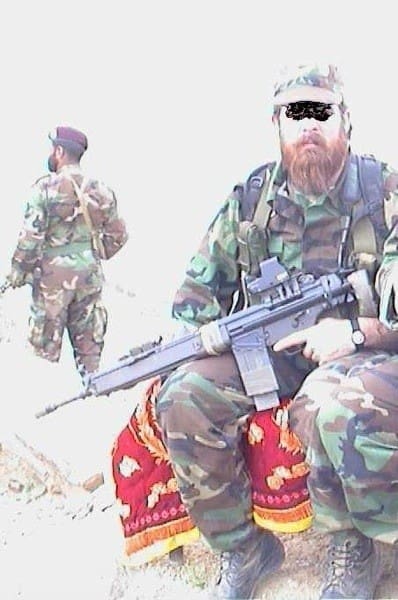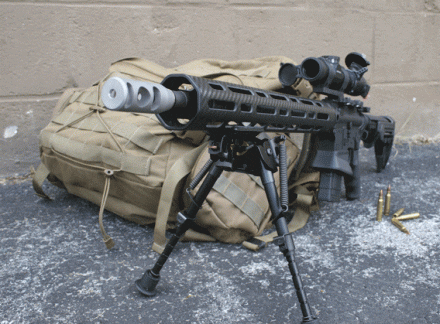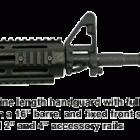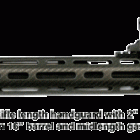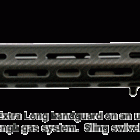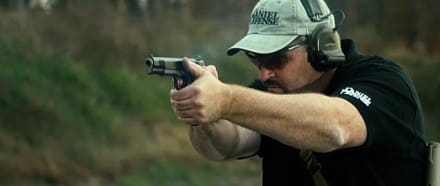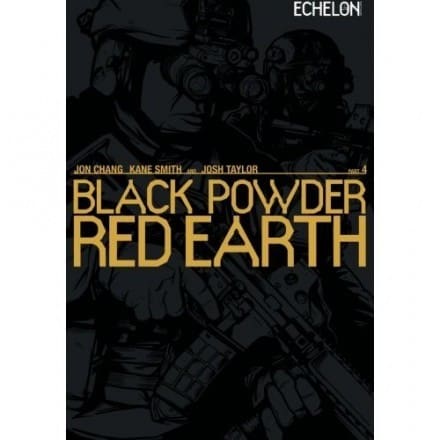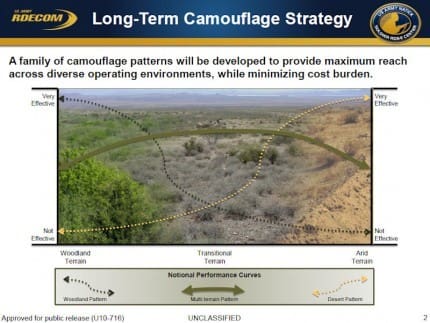Archive for October, 2012
Shrek Sighting – Afghanistan
Wednesday, October 3rd, 2012Lancer Lightweight Carbon-Fiber Handguard
Wednesday, October 3rd, 2012The Lightweight Carbon-Fiber Handguard from Lancer is pretty cool. It’s a free float handguard for 5.56mm AR type rifles and 7.62mm AR type rifles.
The carbon fiber tube is attached to the receiver extension with fasteners so no bonding is required. Additionally, the handguard will remain free floated even if used on a rifle with a fixed sight post due to clearance between the end of the handguard and the fixed front sight post.
It integrates cooling slots that pull double duty as attachment points for Picatinny rail segments. You can customize the setup of your handguard by placing rails only where you need them. Where needed, aircraft grade 7075-T6 aluminum is used.
As you can see, Lancer offers the handguard in extra long, rifle and carbine lengths as well as mid-length (not shown).
Vickers Tactical Inc Announces Partnership With Alias Training & Security Services
Tuesday, October 2nd, 2012“Vickers Tactical Inc is now scheduling classes through our friends at Alias Training & Security Services. Since coming on the scene, Alias has proven to be a great fit for the Vickers Tactical classes and has done an excellent job coordinating and scheduling classes for me.”
– Larry Vickers
Vickers Tactical Inc
Black Powder Red Earth Volume 4 Available Now
Tuesday, October 2nd, 2012The plot of this epic graphic novel is simple, “Special operations contractors, backed by Saudi petrodollars, wage a war of ruthless intrigue and clandestine violence against Iranian proxies and agents in the post-Iraq state, Basran.” But in this final volume, the “Black Powder Red Earth” story culminates in a 4 hour capture-kill raid as the Cold Harbor raiders hunt down an Iranian HVT responsible for the IRGC WMD program.
Volume 4 is available through www.amazon.com.
What’s Old Is New – Some Thoughts To Ponder Ref Camo
Tuesday, October 2nd, 2012I published this article almost a year ago and the points I raised are just as relevant today as they were then.
Earlier this week, A-TACS developer Digital Concealment Systems released their new FG variant for use in forest green environments. Immediately, potential users offered their critique. “This pattern is too green.” “That pattern is too tan.” We’ve heard comments running the gamut. But remember, camouflage is an illusion and the point of the trick is to make something disappear. The problem is that the only constant is the camouflage itself.
Regarding camouflage, this is the most general rule. The more specialized a camouflage is, the less utility it provides. What does this mean? It means, camouflage has to be relevant to the environment it is pitted against. For example, you could have the most perfect of camouflage, making yourself out to blend in like a bush in the desert. But the second you move, you no longer blend in. You might have a great desert camo suit but the second you get near water, everything turns green and you stick out.

This was the point of the holy grail of camouflage, the so-called universal camo pattern. Unfortunately, the pattern the US Army decided to call UCP is anything but. Instead, we’ve all seemed to latch on to something that is in fact the great compromise; Crye Precision’s MultiCam. It blends in to every environment at about the 70% level across the board. A true universal pattern isn’t designed to be perfect in any one environment but rather to be “ok” in ALL environments.
The lesson here is that, while well intended, the adoption of multiple specialized patterns guarantees that Soldiers will inevitably find themselves in environments where their uniform becomes a hindrance rather than a help.
The problem isn’t new. We’ve seen it time and time again.
Many may not know this but the so-called ERDL camouflage pattern adopted by the US military at the end of the Viet Nam conflict actually had two variants; a green and a brown dominant version. This is because Viet Nam wasn’t all jungle but rather consists of multiple micro environments. There are the brown dominant central highlands and the verdant jungle areas. Unfortunately, the supply system had trouble making sure that the right uniform was on the right guy for the right environment. In fact, issues with different patterns infiltrated all portions of the supply chain. There are examples of the ripstop poplin jungle fatigues that were manufactured using both pattern variants in a single garment! History shows this has been the case time and time again.
Then, there’s the recent past. Prior to the adoption of UCP, the US Army relied upon Woodland and Desert camouflage patterns. All Soldiers were issued Woodland clothing and equipment regardless of posting. The 3-Color Desert pattern was considered specialty equipment and only issued to select personnel based on operational requirements. Unfortunately, during 1991’s Operation Desert Storm many American troops wore Woodland clothing due to the shortage of desert issue. Ten years later, this same situation was repeated during the early days of Operation Enduring Freedom and what’s worse, once again during Operation Iraqi Freedom. Unlike post-9/11 operations, the military had ample time to procure and issue specialized desert clothing and equipment prior to the commencement of hostilities with Iraq, yet they failed to accomplish that task. Consequently, we had troops that wore a combination of Desert and Woodland clothing while some received no desert issue at all. The concept of universal camouflage was envisioned to overcome these issues. One pattern for clothing and equipment so that Soldier’s could deploy at a moment’s notice, anywhere in the world.
Most recently, we’ve seen British troops dying their desert uniforms with green dye in order to blend in better with areas of dense vegetation in Afghanistan. Issues like this have caused the US Army to develop a family of patterns strategy with a base pattern sharing a common geometry of shapes yet with different color palettes for different environments.
While dedicated camouflage patterns are fantastic in the environment they are designed for, they work against the Soldier in other environments. As you can see in this graphic shown at the Industry Day conference, the Army has learned that Soldiers in Afghanistan traverse multiple micro environments during a single mission. If the Army adopts dedicated patterns, Soldiers will potentially be safe as houses in one micro environment, but as their mission progresses, their uniform will do the enemy’s work for him, making them stick out like the proverbial sore thumb.
Soon we will be hit with a deluge of new families of camouflage patterns. There is going to be a lot of specialization out there. All I ask is that you remember to consider your application. If you will be sitting in a hide or blind all of the time, go for a very specialized pattern but if you will be operating in a wide ranging variety of environments then look for something more generic.
It’s a real quandary isn’t it? Even if you can afford to purchase all kinds of cool patterns, how will you make sure you’re in the right pattern at the right place and time? Can you imagine having to halt during a movement so that everyone can change clothes?
What to Wear with That Naga Hoodie
Tuesday, October 2nd, 2012Now that Arc’teryx LEAF’s Wolf Grey color is out there lots of guys are looking for equipment to match. Off The Grid Concepts LLC’s Kydex products in Grey look to be a great match.
Why the Army Treats Your ACUs with Permethrin
Tuesday, October 2nd, 2012More than 60 different diseases, some of which are fatal, are spread by ticks, chiggers, insects and other biting arthropods. These include malaria, Dengue (Broken Bone) Fever, West Nile Virus, Lyme Disease and others. The Army Combat Uniform with factory Permethrin treatment can, when worn with other measures, provide over 90 percent bite protection even after 50 washings. This will help protect Soldiers against these diseases. The ACU with Permethrin will be issued to Soldiers serving in the continental United States and elsewhere.


